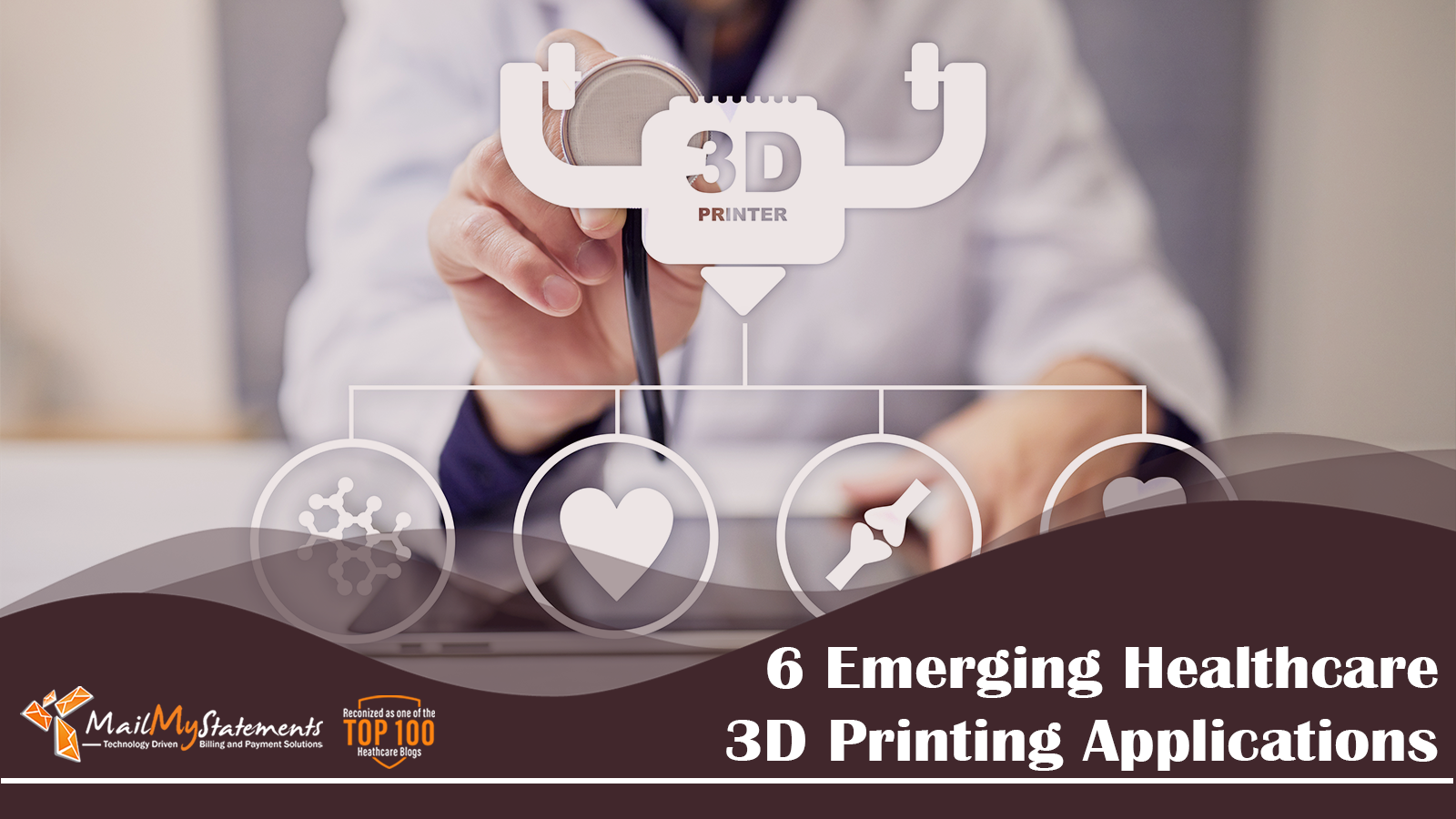6 Emerging Healthcare 3D Printing Applications

Over the past 30 years, 3D printing technology has continued to develop, improve, and become useful -even lifesaving – throughout various industries and applications.
Did you know that many providers are acquiring healthcare 3D printers to improve the quality, customization, and affordability of treatments and supplies? With the price of 3D printers becoming more affordable over the last ten years, the investment seems like a no-brainer to many healthcare systems. In fact, the global 3D printing healthcare market size was valued at $973 million in 2018, and is projected to reach $3,692 million by 2026, growing at a CAGR of 18.2% over the eight-year period.
3D printing is especially beneficial to the healthcare industry, as various medical practices are already relying on this technology to improve treatments. Let’s dive further into the specific 3D printing applications in healthcare and the future implications.
Healthcare 3D Printing
Customized Treatment
Pharmacies and hospitals are turning toward 3D printing technology to enhance precision medicine efforts. With this technology, pharmacists and nurses are printing customized dosages and delivery methods based on the patient’s specific needs and personalized factors like body size, sex, lifestyle, etc.
This level of customization helps improve patient outcomes while keeping treatment affordable, offering a viable solution to one of the longest-standing healthcare concerns.
Education and Diagnosis
Two of the biggest 3D printing investors are the educational and surgical planning fields –and with good reason. Because 3D printers are capable of printing accurate human organs and tissues, medical educators and students may practice surgical and other health treatments more precisely and with less risk, especially as organ donations and cadaver availability continue to decline.
In the near future, we can expect to see 3D printers as staple within healthcare education, as the tool will help improve patient outcomes while lowering education expenses.

Regenerative Medicine
In recent years, new healthcare challenges are emerging as the human life expectancy continues to increase. Aging adults typically face more serious health concerns, and with more people living to older ages, health systems are facing a shortage of available donor organs and tissues.
Although medical practices are seeing success with 3D printing simple organs like the bladder, healthcare scientists are still developing printing abilities for more complex organs like the heart or liver.
The ability to print specific organs for life-saving transplants will serve as one of the most impressive healthcare advancements of modern time.
Save Money and Increase Accessibility with Healthcare 3D Printing
Of course, the initial investment in a 3D printer may seem daunting. However, thanks to the varied abilities and functions, healthcare 3D printing will help medical systems save money over time.
3D printing also addresses a range of accessibility issues, including the creation of customized prosthetics. This process is traditionally very expensive; however, 3D printers have recently been used to successfully create custom prosthetics at a price much more affordable to patients.
Increasing affordability and accessibility for patients experiencing health concerns or needing custom prosthetics will help healthcare heroes provide better quality care.

Equipment and Device Shortages
The Covid-19 pandemic taught us that supply shortages can occur instantly and leave long-lasting and devastating effects. Struggling to secure the supplies needed to properly treat patients is harmful to everyone involved.
Luckily, the use of 3D printing throughout the pandemic helped supplement gaps in PPE and other high-demand medical equipment. In fact, a study conducted by BMC Health Services revealed they 3D printed and distributed 22,135 medical items to healthcare practices and hospitals throughout the height of the pandemic. Their success led to the conclusion that “[3D printing] helped mitigate shortages of medical devices due to problems in the global supply chain.”
Eliminating Animal Testing
One of the most common healthcare 3D printing applications is 3D bioprinting. This process creates functional, living, and accurate human tissues, which serve as the perfect test model for new drugs or vaccines.
Testing on human tissues instead of animals results in more accurate findings while reducing the need to breed and harm animals solely for the purpose of testing.
Final Thoughts
While the current healthcare 3D printing applications are impressive, we have yet to scratch the surface of the future capabilities.
As scientists continue to experiment and test new 3D printing uses, the healthcare industry expects to see increased adoption of this technology in the coming years.
MailMyStatements is a statement and payment vendor who strives to simplify the billing process through the use of technology-driven solutions. Get in touch with us today to learn how we can implement eStatements, customized paper statements, or collection options for your practice.

Michael Bell is the Chief Marketing Officer for MailMyStatements. Mike is a dynamic, innovative thinker, a healthcare technology advocate, a consumer, a patient, and an avid golfer.
Follow him on Twitter!
@staroneconsult
![]()



